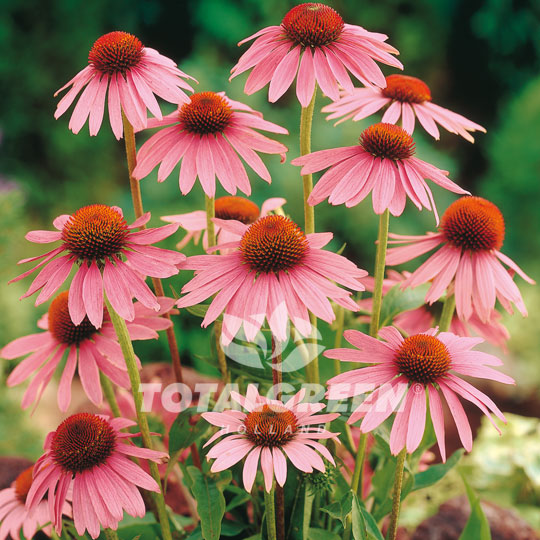CHARACTERISTICS
Attracts Butterflies - Border planting - Container planting – Cut Flower – Deer Resistant – Dried Flower usage – Drought Tolerant – Mass planting – Wild Flower
Cone Flower Echinacea Purpurea
Prized for their large, brightly colored, daisy-like flowers, coneflowers have rightly earned their nickname King of the Daisies. A mainstay in today’s landscape, gardeners across the country are fascinated by their eye-catching blossoms and are pleasantly surprised to discover how easy they are to grow. Echinacea also provides winter-long architectural interest with its rounded cones on stiff stems which remain upright through the winter.
Echinacea is a wildflower native to the eastern United States and is well adapted to survive the hot, windy conditions typical of that region. Their long tap root stores water, giving them the ability to withstand periods of drought once they are established. Light, loamy soil is best, but they can adapt to any well-drained soil. Best performance will be attained in full sun, though light shade is tolerated.
- Planting Location: Full sun or partial shade
- Planting: February-May after Frost
- Planting Depth: 1 inch (2,5 cm)
- Planting Distance: 18 inch (45 cm)
- Flowers In: July-September
- Flowering Height: Approx. 30 inch (75 cm)
How to Grow
Easy to Grow:
1. Select an area with full sun or semi-shade
2. Dig a hole 1 inch (2,5 cm) deep
3. Place the perennial in the hole, with pointed side up
4. Space perennials 18 inches (45 cm) apart
5. Cover with soil and water thoroughly
Planting Tips:
Plant in groups of 2 or more, in well-drained soil. Perennial will benefit from a handful of compost added to the planting holes. You may divide the plants in early spring and it’s quite easy. Any seedlings that appear can also be moved at the same time.

Search code: TG960


